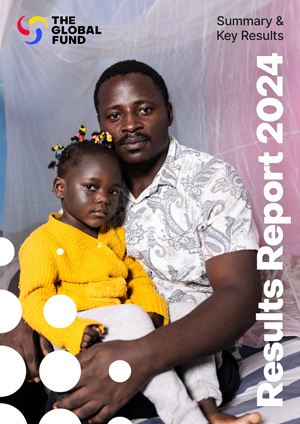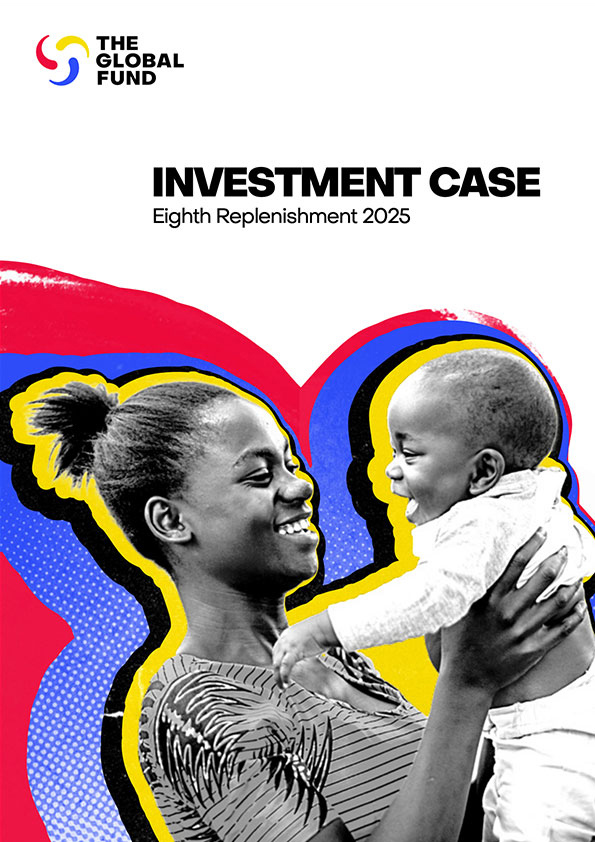Making the World Safe from the Threats of Emerging Infectious Diseases
(From a speech delivered at the Prince Mahidol Award Conference in Bangkok, Thailand on 1 February, 2018)
I am relatively new to the world of global health, having spent most of my career in business and finance. Yet starting in 2015, I spent a good portion of my time at Harvard working on issues relating global health security with the U.S. National Academy of Medicine and with the World Bank. And with my new role as Executive Director of the Global Fund to Fight AIDS, Tuberculosis and Malaria, the career switch is complete – from banking to global health in under three years!
This background brings advantages and disadvantages. The obvious disadvantage is that I have much to learn, about the pathogens themselves, about prophylactic and therapeutic strategies, and about the intricacies of global health institutions and mechanisms. The advantage is that I can bring a fresh perspective, ask the stupid questions and can help connect the world of global health with the worlds of business and finance – a connection that often seems quite flimsy and rife with suspicion and misunderstandings.
My view on the infectious disease threat that we are focusing on at this superb conference can be summed up by the phrase “the neglected dimension of global security” – which was also the title of the report on pandemics produced by the international commission I chaired on behalf of the U.S. National Academy of Medicine. When you frame the risk of infectious disease threats as a human and economic security issue, it seems clear that we haven’t got our act together sufficiently to protect mankind from such threats.
Few risks could cause the loss of millions of lives in the way a highly contagious and virulent influenza pandemic could. Few risks can cause as much economic damage as the fear sparked by a major infectious disease outbreak. Yet we devote a fraction of the resources we deploy to other risks – of war, financial crises, nuclear disasters, even climate change – to preventing, preparing for and responding to infectious disease threats.
On top of the risk of infectious disease outbreaks, we face the real and growing threat of antimicrobial resistance, a peril that exacerbates the dangers from individual pathogens and if unaddressed, could render unsustainable swathes of modern clinical practice.
These twin threats – one episodic and easy to ignore when it’s not happening; the other, creeping up on us, inevitably and inexorably – combine to pose huge dangers to global health security. We neglect them at our peril.
This is not to diminish the things that have been and are being done to make the world safer from such threats. On infectious diseases, there have been many positive steps in the wake of the Ebola crisis, including the launch of the Joint External Evaluation process, the establishment of the WHO’s Health Emergency Programme and the creation of CEPI (Coalition for Epidemic Preparedness Innovations). Yet we all know that if we rigorously scrutinize the three crucial domains – national preparedness, our scientific tools (vaccines, diagnostics, therapeutics), and our global coordination capabilities through WHO, the World Bank and others – there are still yawning gaps.
Likewise on antimicrobial resistance. The Global Action Plan on Antimicrobial Resistance was a big step forward, and there are many good initiatives on surveillance, stewardship and responsible use, and towards the development of new antibiotics and vaccines and diagnostics. We should recognize these achievements, but also be realistic – so far, they’re not enough.
Moreover, when we talk about potential risks to global health security, we implicitly tolerate a base level of human loss and economic burden that shouldn’t be acceptable. AIDS, TB and malaria alone killed 3 million people in 2015. These are infectious diseases we have the tools to prevent and treat. And the economic burden on the hardest afflicted countries is enormous – those who are sick and the carers looking after them cannot contribute to economic development.
Now I know that most discussion of global health security focuses on emerging infectious diseases with epidemic or pandemic potential, or on the perils of antimicrobial resistance, rather than on the endemic infectious diseases. And in fact I myself been guilty of this. But I think we need to rethink this way of framing the discussion about global security. It’s an odd definition of security that only focuses on the things that might kill you and excludes those that are actually killing you. Asking political leaders in poor countries to do more to counter potential threats from infectious diseases seems perverse, and arguably immoral, when actual threats from existing infectious diseases are already killing tens or hundreds of thousands of their citizens.
Of course, it does make sense to protect against potentially catastrophic tail risk events, and the constellation of threats to lives and livelihoods does look very different if you’re sitting in London, Paris or New York, where the likes of malaria, cholera, yellow fever and dengue are absent and TB and AIDS increasingly well controlled, rather in a village in the DRC or the Mekong. But strengthening health security has to start from tackling the infectious diseases that are killing people now.
Consider the example of AIDS. Emerging in the ’70s AIDS was an infectious disease threat that went on to be a global pandemic that has killed 35 million people – and despite massive reductions in mortality rates, AIDS still kills about one million people per year. But nowadays we don’t typically include AIDS in discussions on health security. To someone approaching the topic for the first time, it might seem slightly bizarre that the biggest pandemic afflicting mankind in recent decades is rarely mentioned as a health security issue.
Taking a more integrated approach to health security, encompassing both endemic and emerging diseases, makes sense from a practical perspective. Too often the multiple agendas, initiatives and institutions that characterize the global health space compete rather than collaborate and sometimes only accidentally leverage the synergies between them. Yet much of what we do to tackle individual diseases involves building capabilities and infrastructure that can serve multiple purposes – community health workers, supply chains, diagnostic labs, disease surveillance, infection control regimes, vector control. Without diluting our focus and accountability for our respective missions we can get smarter about working together to help build stronger and more resilient health systems that can achieve multiple purposes and respond to multiple challenges.
Another practical reason for taking an integrated approach is that the roots of the next emerging threat can emerge from or be intertwined in today’s problem. Drug-resistant TB is a good example. About a third of total antimicrobial resistant deaths are caused by drug-resistant TB. So if we want to address the antimicrobial resistance challenge we have to tackle the TB challenge. More generally, the increasing incidence of resistance – whether to antiretrovirals in AIDS, or to artemisinin or pyrethroids in malaria – poses threats that could take us backwards if we don’t address them. And given the scale of these diseases, any slipup is measured in tens or hundreds of thousands of lives.
So I have five messages:
- First, the global health community has to get better at articulating what’s at stake in making the world safer from infectious disease threats – both in terms of lives and economics. At a time when many of our public leaders seem afflicted by tunnel vision – seemingly only interested in what’s within their borders and what’s happening within their term of office – we need to be pointing out that viruses don’t need visas and don’t respect election timetables. And we shouldn’t be competing with the climate change agenda, but combining with it. The degradation of habitats and shifting climate patterns powerfully exacerbates the potential threats from infectious diseases.
Winning the argument means we have to spend more time talking to people outside the global health arena, not preaching to the converted. And we have to use their language, their ways of thinking about risks, their ways of measuring economic impact. And we need to recognize that some of the terminology we use – such as the distinctions between epidemic and endemic, or between bacteria and viruses – are confusing to some of the policymakers whose support we need. - Second, we need to talk about health security in a way that makes sense both to taxpayers in high-income countries and to the people most at risk from infectious diseases – often those who are living in marginalized communities. Making these people safer from the diseases they haven’t got makes little sense to them when they are dying from the diseases they do have.
I understand that people living in high-income countries are inevitably going to be most interested in being protected against new threats that might affect them directly. But to exaggerate to make the point, if global health security is seen as code for making only those who live in the rich world safer from infectious disease threats then it’s both dodgy morally and won’t be effective as a strategy. It ignores the fact that new threats are most likely to emerge in the places and amongst the populations where endemic diseases are most prevalent, and that by tackling one, we build better defenses against the other. As Dr. Tedros said, global health security is only as strong as the weakest link. - Third, we have to embed and broaden our approach to antimicrobial resistance, so that antimicrobial resistance becomes an integral component of how we tackle infectious disease, rather than something separate – as it can sometimes seem. And without diminishing the threat of antibiotic resistance, we need antimicrobial resistance to encompass other forms of resistance. One example of relevance to this region – if it spreads and worsens, the artemisinin resistance we are seeing in the Mekong could reverse the great advances we’ve made in reducing malaria mortality.
- Fourth, we need to get better at working together to tackle specific diseases and to build stronger, more resilient health systems. Although there is fabulous work being done by dedicated professionals across every aspect of global health, the impact of such efforts can be sometimes diminished or eroded by fragmentation, duplication and poor coordination. And this need for effective collaboration stretches beyond those focused on human health into animal health, housing and education. We need to translate the rhetoric of One Health into action, so that it becomes the norm, not the exception. We must minimize institutional turf battles. And we must find better models of collaborating with the private sector. I don’t have a magic wand to achieve this, but I can promise that under my leadership the Global Fund will take a big picture view of its mission, and a collaborative approach towards achieving its goals.
- Finally, we need to ensure that gender considerations inform health security strategies in a powerful, practical – and effective – way. You only have to look at HIV infection rates amongst young women and girls in certain parts of Africa to realize that women are often less protected from health risks. This is despite the fact that protecting women’s health is arguably more important than protecting men’s, given the knock-on impact on child health.
Together, we have the opportunity to make humanity much safer from the threat of infectious disease. In most cases, we already have tools and strategies that work. We should take our inspiration from Prince Mahidol. He was a visionary and a pioneer in bringing health to the people. This conference is our legacy. We should make the most of it to lift our game, strengthen our execution and collaborate more effectively.
Thank you.







